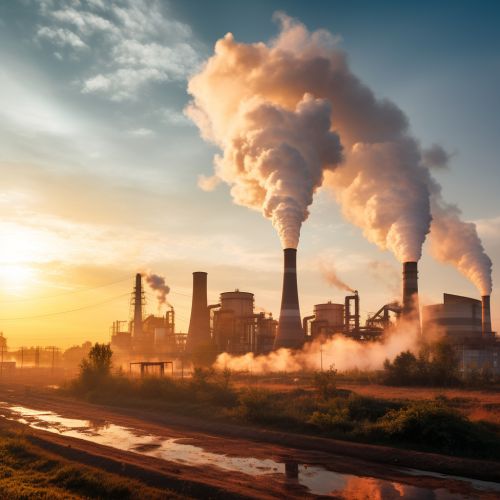Global warming
Introduction
Global warming refers to the long-term increase in Earth's average temperature. It is a major aspect of climate change, which includes not only rising temperatures but also extreme weather events, shifting wildlife populations and habitats, and a range of other impacts. Most scientists agree that the warming since the mid-20th century has been largely caused by human activity, specifically the burning of fossil fuels and deforestation.
Causes of Global Warming
The primary cause of global warming is the increase of greenhouse gases in Earth's atmosphere. These gases trap heat from the sun and prevent it from escaping back into space. The most significant greenhouse gas is carbon dioxide (CO2), which is released through human activities such as burning fossil fuels (coal, oil, and natural gas) and deforestation.


Burning of Fossil Fuels
The burning of fossil fuels for electricity, heat, and transportation is the largest single source of global greenhouse gas emissions. Power plants are the biggest source of these emissions, primarily due to their burning of coal and natural gas. Vehicles, including cars, trucks, and airplanes, are also significant contributors, as they burn gasoline and diesel fuel.
Deforestation
Deforestation is another major contributor to global warming. Trees absorb CO2 from the atmosphere, so when forests are cut down and the wood is burned or decomposes, that stored carbon is released back into the atmosphere. This not only adds more CO2 to the atmosphere, but also removes the ability of the trees to absorb future CO2.
Effects of Global Warming
Global warming has a wide range of potential effects, many of which are already being observed. These include rising sea levels, melting ice caps and glaciers, more intense and frequent extreme weather events, and shifts in wildlife populations and habitats.
Rising Sea Levels
One of the most significant effects of global warming is the rise in sea levels. This is caused by the expansion of seawater as it warms, as well as the melting of ice caps and glaciers. Rising sea levels can lead to coastal flooding, erosion, and the displacement of communities.
Extreme Weather
Global warming is also expected to increase the frequency and intensity of extreme weather events. This includes heatwaves, droughts, heavy rainfall, and powerful storms. These events can have devastating impacts on communities, causing damage to homes and infrastructure, disrupting food and water supplies, and leading to loss of life.
Wildlife and Habitats
The changing climate can also have significant impacts on wildlife and their habitats. Many species are adapted to specific climate conditions, so changes in temperature, precipitation, and sea level can affect their survival. For example, polar bears rely on sea ice for hunting, so the melting ice caps are a major threat to their survival.
Mitigation and Adaptation
Addressing global warming requires both mitigation and adaptation. Mitigation involves reducing greenhouse gas emissions, while adaptation involves making changes to cope with the effects of warming.
Mitigation
Mitigation strategies include switching to renewable energy sources, improving energy efficiency, and reducing deforestation. Governments, businesses, and individuals all have roles to play in mitigation. For example, governments can implement policies to promote renewable energy and energy efficiency, businesses can reduce their carbon footprints, and individuals can make lifestyle changes to reduce their own greenhouse gas emissions.
Adaptation
Adaptation strategies include building sea walls to protect against sea level rise, developing drought-resistant crops, and creating wildlife corridors to help species move to more suitable habitats. Like mitigation, adaptation requires action at all levels of society.
